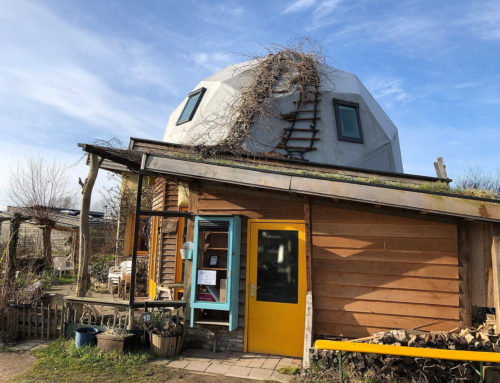Modern buildings have a bad reputation, and it's easy to see why. From the brutalist concrete shells of the 1960s to the materialist excess of the 1980s, right up to the wave of cheap, featureless housing of the 1990s, humanity seemed to be at odds with the organic environment, and the idea of ecological sensitivity was nowhere to be found. Now, thanks to the generation of architects who have grown up in the midst of the green revolution, modern buildings are embracing a more harmonious approach, and contemporary homes are taking advantage of new technologies to minimise their carbon footprint.

Today we'll be looking at some of the most innovative modern green homes, and exploring the ways in which they reconcile the need for environmental sensitivity with the desire for stylish, elegant living spaces.
First up, we have the stunning industrial loft designed by Argentinian architects A77, which combines recycled materials with smart design to create a space which is true to its origins while looking squarely at the future. By using original metal features combined with sustainably-sourced timber, A77 fuse the organic and the industrial, resulting in a building which lives in harmony with its surroundings. South America is ahead of the game when it comes to intelligent, eco-considerate building, and A77 is just one of many forward-thinking architectural teams who are transforming the continent's decaying industrial infrastructure into the basis for a new approach to housing.
While the British government has scrapped its plans for zero-carbon housing in the UK, South American governments are investing heavily in green housing. In Brazil, for example, the Morar Carioca architectural competition will hire 30 architects to build healthy, green homes, schools and clinics for the 200,000 poorest residents of Rio de Janeiro.
But it's not all doom and gloom on the UK front. Our next revolutionary modern home is the aptly named Zero Carbon House in Birmingham, which brings the carbon-free dream to the terraces of Brum. Built around the bones of a Victorian terrace, this home, belonging to architect John Christophers, encapsulates everything that's exciting about modern environmentally conscious architecture. The sleek, elegant lines capture the contemporary aesthetic, while also supporting a range of energy-saving technologies. In fact, the house is a support system for an incredible array of energy saving and generating features, including 35 square metres of solar paneling, and an innovative rainwater gathering system, which feeds the taps and washing machine.
As these examples, and countless others from around the world show, modern architecture has faced the challenge of environmental responsibility and triumphed. Contemporary design is no longer fighting the ecosystem, but supporting it and being supported in return. The design philosophies which underpin this architectural revolution may take a few years to filter through to the mass market, but, as these prototype homes show, the way our homes interact with the world is about to change forever.

Hi! I’m Chris, the founder of The Organic & Natural Paint Co, and I’m focused on the education and promotion of natural non toxic alternatives to chemical laden everyday products that we just take for granted. We have a choice, and I want to raise awareness of alternative products that don’t actually harm us!
This company is my way of pushing the awareness of better indoor air quality, something that I am personally passionate about due to my own children’s breathing medical conditions. I just couldn’t paint with big brand standard petrochemical paint any longer and wanted another solution.
Read more: About me
Twitter: NaturalPaintCo
Instagram: cleanairclubofficial














